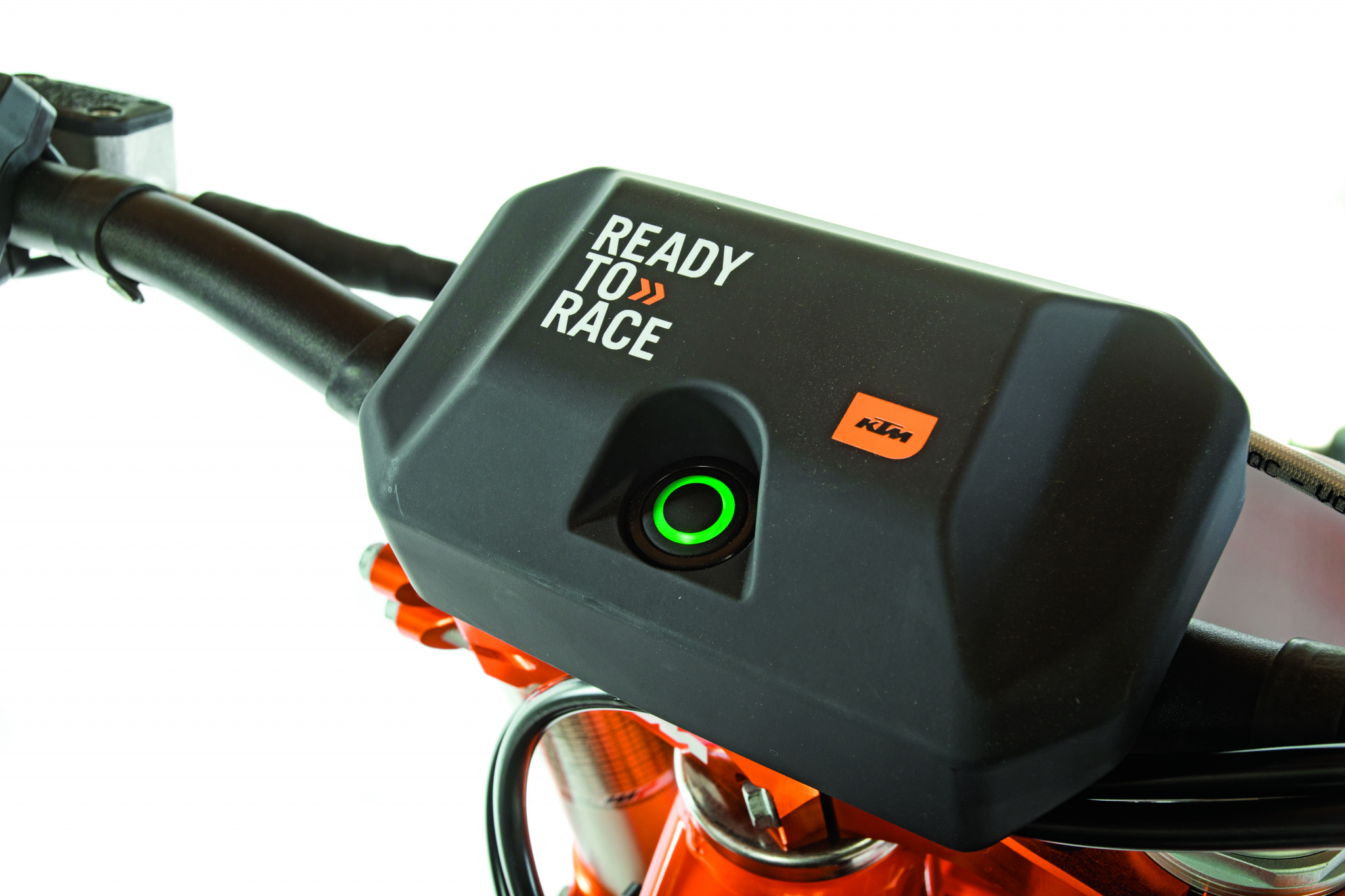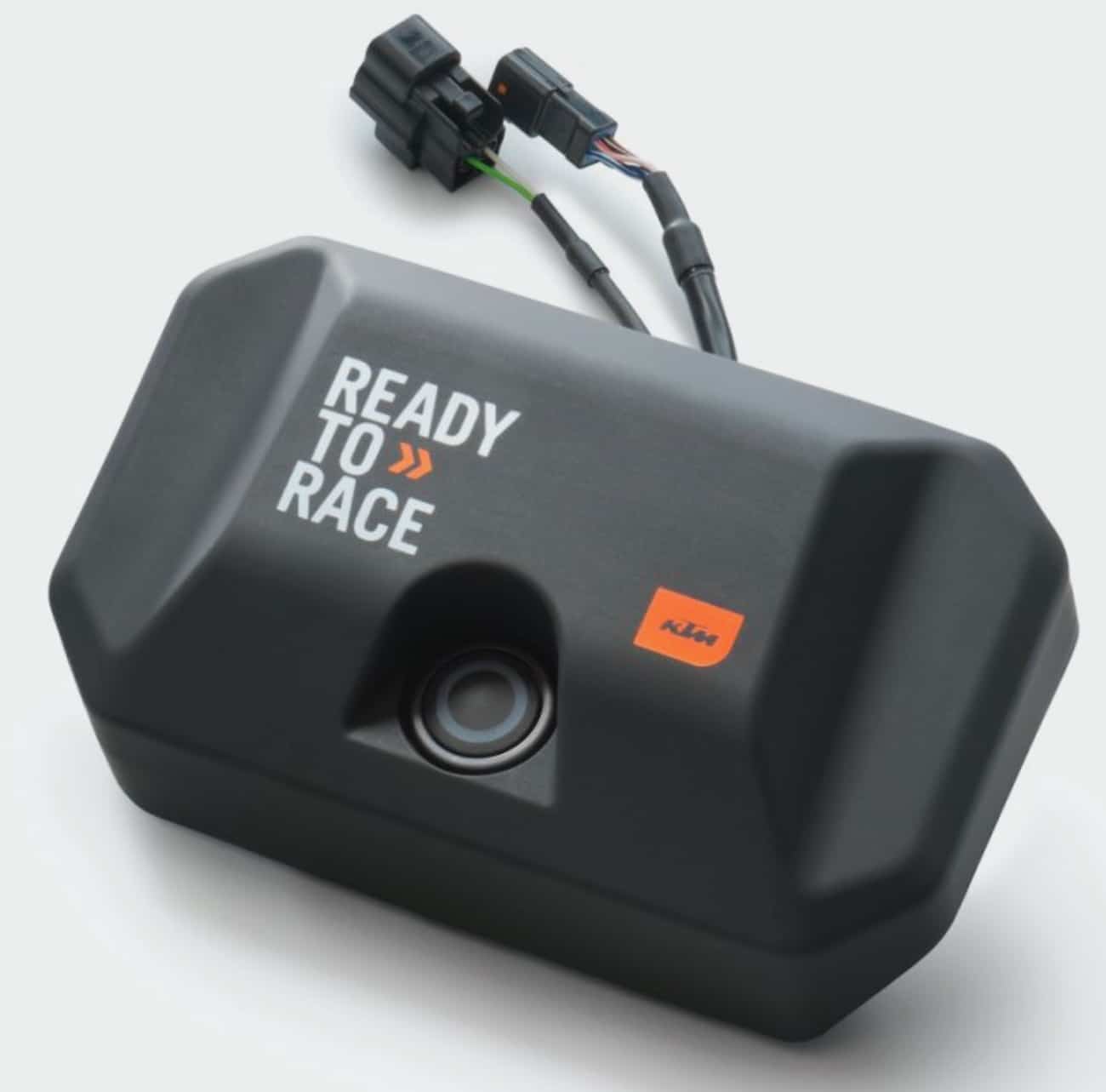MXA TECH SPEC: KTM CONNECTIVITY UNIT TIPS AND TRICKS
(1) Concept. The 2021-1/2 KTM 450SXF Factory Edition and Husqvarna FC450 Rockstar Edition came stock with KTM’s Bluetooth-compatible Connectivity Unit. Hidden under an over-size crossbar pad is a booster ECU that allows the racers to adjust mapping to change the engine performance parameters while also checking engine status and monitoring operating hours.
(2) Availability. The Connectivity Unit does not come on the 2021 production KTMs or Husqvarnas (and doesn’t appear on the 2022 models either), only on the Rockstar and Factory Editions, but it can be purchased to retrofit on the 2021 KTM or Husqvarna four-stroke models by simply plugging in one wire. The retail price is approximately $250. However, it has been delayed several times.
(3) History. Yamaha was the first to use a smartphone app to adjust the bike’s power via Wi-Fi connectivity. Kawasaki and Suzuki offer custom map tuning options as well. Kawasaki uses an external handheld controller that has to be plugged into the bike. Suzuki’s concept is different; Suzuki’s MX-Tuner device plugs into the bike and then uses a smartphone app to connect via WiFi to the MX-Tuner. With the Kawasaki, Suzuki and Yamaha programs, riders can adjust the fuel and ignition timing to adjust engine characteristics. KTM (and by proxy Husqvarna) was late to the “custom map” show.
(4) Mapping. When compared to other smartphone tuners, the KTM program is much easier to use. Instead of changing ignition and fuel parameters in 16-box graphs, the KTM app is dummy-proof. Once you input the type of dirt (sand, gravel or hard-pack) and track conditions (dry or wet), you swipe sliding scales with your finger to adjust throttle response from light to aggressive, engine braking from light to heavy, traction control from none to more, and launch control from low to high. For high-tech ECU tuning geeks, this app isn’t as adjustable as what a serious engine tuner would use; but, for the average rider, it’s much easier to understand.
(5) Suspension guide. You can’t physically adjust the suspension with the KTM Connectivity Unit. The suspension portion of the myKTM app is simply a guidance tool, and it doesn’t need to be connected to work. The “sag assistant” shows you where to measure your bike’s sag and log the sag numbers and does the math for you. It informs you if you need to go up or down on your spring rates and if the shock needs more or less preload based on the numbers you record in the app. After the sag is set, the app asks you questions based on your skill level (Basic, Advanced or Pro), body weight, gear weight, track type (motocross or enduro) and terrain (sand, soft, medium, hard). For the forks, the app recommends air pressure, compression clicks, rebound clicks and fork height. For the shock, it recommends compression clicks, rebound clicks and high-speed compression turns.
(6) Custom maps. The stock KTM and Husqvarna 450s’ baseline settings have good throttle response, light engine braking and adjustable rear-wheel traction. All of this can be fine-tuned with the Connectivity Unit. The MXA wrecking crew’s impression is that the new tuning system offers a wide range of adjustability for detuning your 450, making it easier to ride, but it offers a smaller range of adjustment to make your 450 engine more aggressive. We were most interested in testing the Unit’s breadth, from the most aggressive map to the mellowest map. Surprisingly, there is a wide range between the two. The aggressive map was exciting, broke the rear wheel away and felt loose coming out of corners. The mellow map was much slower, almost like going from a 450 to a 350. To ride it fast in the detuned setting, we had to twist the throttle much more. Traction control also made a significantly bigger difference than it did on the stock KTM and Husky models.
(7) Traction Control. Unlike the other mapping options, the Connectivity Unit cannot change the sliding levels of traction control unless you click the TC button on the handlebar map switch.
(8) Bluetooth ECU transmitter. The Bluetooth-compatible booster ECU lies flat under the crossbar pad, and the actuation light is visible through a round opening. You can move the transmitter to a vertical location behind the front number plate, but you would have to design your own mounting plate and find a way to access the flashing access-light button.
(9) Uploading maps. The bike must be turned off and in neutral to upload a new map. You can only adjust Map 1; Map 2 is always the stock aggressive map. It only takes 20 seconds to upload a new map, and, if it’s quiet enough, you’ll hear the fuel pump kick on once the map is uploaded.
(10) Pros and cons. The KTM app is easier to use than its competitors, but the handlebar pad is ugly and KTM doesn’t currently offer optional downloadable maps. Yamaha’s app is more difficult to customize; however, Yamaha offers a wide range of recommended maps that are easy to download and install into your bike.








Comments are closed.